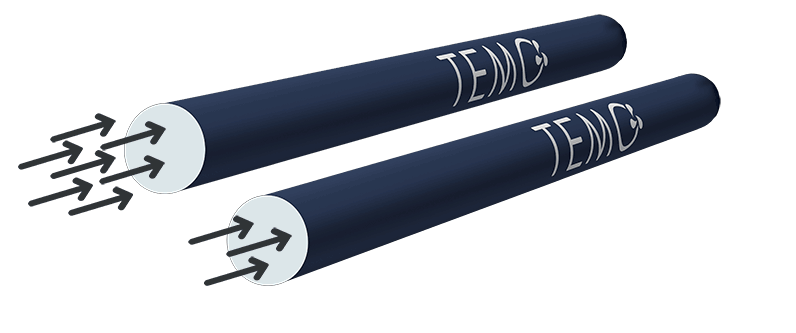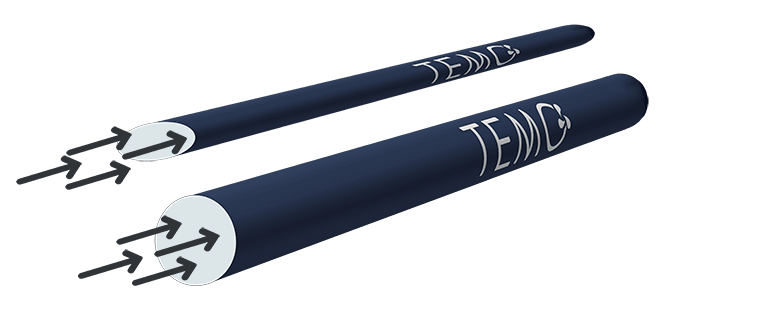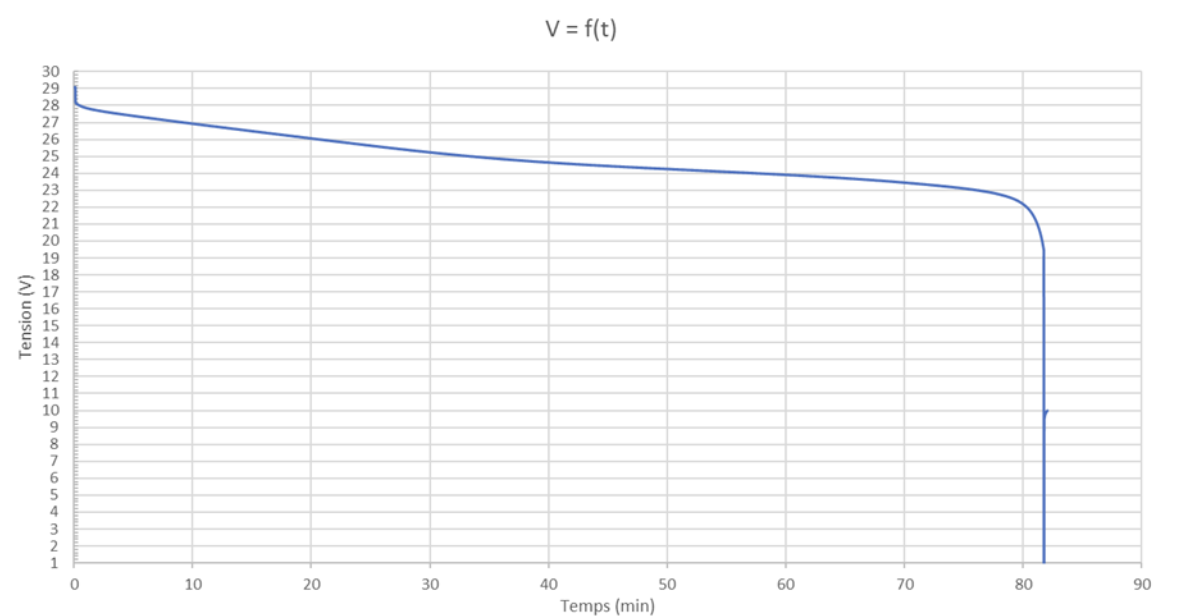Today we’re going to navigate through the intricacies of Watts, watt-hours, amperes, amp-hours and volts. Hang on to your seats, we’re going to explain everything in detail so you can be an expert in these electrical concepts!
Instantaneous power from a motor: Watts vs Horsepower
Let’s start with instantaneous power of an electric motor (Watts vs Horsepower). The power of an electric motor is expressed in watts (W) and this is what determines its force, torque and propeller speed (in revolutions per minute or rpm). The more watts, the more powerful it is!
🚙 It’s like comparing the power of a car with the number of horsepower it has. A car with 100 horsepower is more powerful than one with 50 horsepower, because it can go faster or accelerate more quickly.
But don’t be fooled by the Watts vs Horsepower comparison. It’s often said that our TEMO·450 has the same efficiency as a 1.5 hp internal combustion outboard, when in fact the mathematical calculation is 0.6 hp. But that’s not entirely accurate, it’s a bit like confusing tea towels and bath towels.
🚨 Electric motors have high efficiency, around 85-90%, which means that almost all the electrical power delivered by the battery is converted into available mechanical power at the output end. In contrast, internal combustion engines lose a large proportion of their thermal power in heat,
resulting in lower efficiency, generally around 40%.
What’s more, the power curve of electric motors differs from that of combustion engines. Our electric motors have their maximum torque at low engine speeds, which means that the propeller is better optimised for propulsion.

Quantity consumed: Watt-hours vs Fuel
Let’s move on to the quantity of energy consumed (Watt-hours vs fuel consumed). Watt-hours (Wh) measure the amount of electrical energy consumed by the motor over a certain period of time. It’s a bit like being told how much "juice" you used by running your 100-watt motor for 2 hours: 200Wh.
You see, it’s simple, it’s a measure of the energy consumed.
🚙 And for internal combustion engine cars, we use the volume of fuel to measure their consumption. It’s like saying that a car does 50 miles to the gallon: It’s a way of quantifying the amount of fuel needed to make the car go a certain distance. Our beautiful TEMO·450 is fitted with a 290 Wh. battery. This means it can consume up to 290 watts for an hour, or 145 watts for 2 hours.
Amps and Volts: Current and Voltage
Now, listen up for amperes (A)! Amperes (or amps) measure the intensity of the electric current flowing in our electric motor. To understand this, imagine a garden hose. The more you open the tap, the stronger the water flows (it’s a mix between pressure and flow). It’s a bit like that with amps: the harder you squeeze the trigger, the higher the current.
But the problem is that this intensity also varies according to the voltage. And here we’re talking about good old Volts, and that’s where things get a bit more involved!
It’s like propelling a boat with garden hoses.
Imagine two identical hoses. If you open tap A more than tap B, more water will come out of hose A.
It will therefore go faster or accelerate quicker:

Case 2: if you send the same amount of water through two hosepipes of different diameters, the flow will be faster through the smaller hose than through the larger one.

To put it more simply:
- the cross-sectional area of the hosepipe (diameter) is the Voltage (Volts),
- the speed is the Current (Amps),
- the flow rate is the Power (Watts).
Now let’s relate this to the TEMO·450.
To calculate the current of the TEMO·450, we divide its power of 450W by the average voltage of 25V, to reach an average of 18 amps.
Averages, averages, why are we talking about averages? 🤔 Well, that’s because voltage varies a lot.
Take a deep breath, then read on. It will all become clear:
The influence of voltage on current
Yes, voltage varies according to the level of charge in the battery! This is the famous discharge curve specific to lithium-ion batteries. Here’s the one for the TEMO·450.

At its highest point, when fully charged, it reaches 29V and drops to 20V when discharged.
When fully charged, the TEMO·450 has a voltage of 29V. To deliver a power of 450W, it will use a current of 15A.
When the TEMO·450 is "out of charge" it only has a voltage of 20V. To maintain the power of 450W, we have to compensate by increasing the current to 22.5A. But this generates heat and puts more strain on the battery, so in the last few minutes we limit the current and the power available to offer greater range.
Below 20V, the circuit board shuts off to prevent any damage.
To conclude, in order to output 450W from the beginning to the end of the cycle, we send more amps at the end of a cycle than at the beginning. Here’s a diagram to illustrate:

Let’s draw one last parallel between this voltage and our garden hoses.
Getting to the end, it’s as if the hose shrinks as we’re watering. To keep the same flow rate in the hose, the speed in the hose will have to increase. At the very end, the hose will be very small, and to avoid damaging it by applying too much pressure, the water will be turned off.
Energy storage capacity: Ah vs Wh
💡 A quick aside about the battery’s energy storage capacity. This is measured in amp-hours (Ah). The TEMO·450’s battery has a capacity of around 10Ah, which means it can supply 10 amps for one hour. But comparing Ah between different devices is tricky, precisely because of the voltage variations explained above.
We prefer to compare Wh (watt-hours), a more reliable unit of energy consumption. Wh are also used to calculate and compare your electricity bills at home.
The TEMO·450 consumes 290Wh, so we can calculate the cost of recharging to be approximately 6 euro cents (at a rate of €0.20/kWh): (290 Wh x €0.2062 / 1000 Wh = €0.059)
And while we’re on the subject of recharging, let’s talk about chargers for the TEMO·450.
They operate at different voltages:
A 220V domestic charger requires a low current of around 0.5A.
An inverter/charger with a voltage between 12V and 24V requires around 8A.
Despite this, they will both recharge your TEMO·450 in about 3½ hours.
And there you have it, using the following 2 formulae:
Power = voltage x current (W = V x A)
Energy consumed = voltage x storage capacity (Wh = V x Ah)
You can switch the figures around to check the characteristics of a product.
Here’s a summary of the data for the TEMO·450: 450W, maximum voltage of 29,5V, average current of 18A, consumption of 290Wh and storage capacity of 10Ah (with a voltage of 29V).
It’s like a colourful jigsaw puzzle where every piece fits into place!
But don’t leave just yet, we’ve got just a bit more information for you from our engineers!
It’s often said that our motor "develops" 450W, but that’s not entirely correct. When you go shopping for the best parts to build a TEMO·450, you don’t buy "watts" from the motor supplier, you buy "revolutions per minute" AND "motor torque"!
Ultimately, it’s the propeller that does most of the work, providing efficiency and determining power (ours is designed by recognised experts Naval Group, so it performs very well!). And, funnily enough, a good motor will consume fewer watts than a bad motor with the same torque! It’s not magic, it’s just engineering genius!
Ah, but I can see you coming with your question: “Why can’t we go faster if the motor isn’t being used to its full potential?” Well, it’s quite simple, and again because of the propeller! It’s a bit like choosing a bicycle sprocket. A large sprocket allows you to accelerate quickly, to climb big hills, but once you’ve
got going or are going downhill, you’ll never be able to pedal fast enough to improve your top speed.
At TEMO, we’ve opted for a sprocket that keeps us going at 3 knots all the time. It’s a choice between thrust and speed.
Now let’s stop racking our brains and get out on the water to experience the TEMO·450 for real.
Here’s the background:
· 2 Dinghies
· 2 speeds
Chow long do you think one charge will last? If we tell you between 53 minutes
and 1 hour 45 minutes, would you believe us? Here’s the proof!
Here's the proof! 👇
You’re now experts in marine electricity, so you can amaze everyone with all your electrifying knowledge! Now, get out there with your TEMO·450 and set off on your adventure, keeping an eye on those watts and amps!
Dieser Artikel ist auf Englisch verfügbar
Este artículo está disponible en inglés